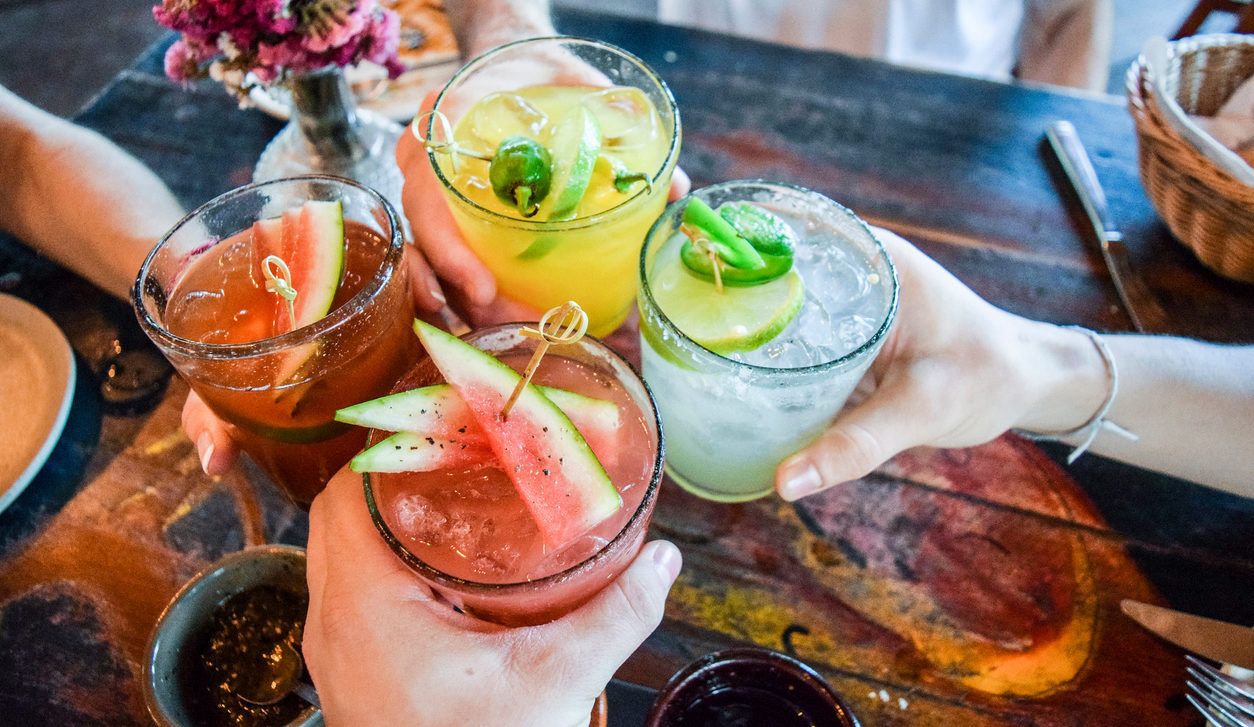Even the most refreshing of summer drinks come with dangers that have nothing to do with the alcohol content. Good Housekeeping writer Nicol Natale reported on one such cautionary tale. Her roommate, Courtney, got more than just a hangover when she decided to celebrate Memorial Day weekend in Florida with her family and plenty of margaritas. The day after squeezing a ton of limes and hanging out around the pool, Courtney woke with very noticeable red blisters all over her hands. Ouch!
And unfortunately, Courtney is not the first fan of the tequila, lime and ice combo to fall prey to this painful skin condition.
Doctors have even given this particular type of reaction a nickname to reflect its connection to margaritas. That’s right; there is a specific type of injury known as margarita burn. One of the key ingredients in your favorite poolside pick-me-up caused the affliction caused. And no, in this case, we can’t blame the tequila!
Here’s what the burns look like; swipe to see the full effect.
Technically, the scientific name for this reaction is phytophotodermatitis. The word breaks down to phyto, which references plants; photo, which references light (as in photosynthesis, thank you high school biology); and dermatitis, which references inflammation of the skin.
Basically, there are particular types of vegetation – notably citrus fruits like lemons and limes – which contain complex compounds.
Called furocoumarins, these compounds interact negatively with sunlight. Consequently, it can be dangerous to get those reactive materials on your skin and then venture into the sun. You might experience a major reaction, ranging from redness to burning to big blisters.
Don’t believe us? These people have first-hand experience.
They can confirm that despite the fun name, margarita burn actually sucks.
I recently got a rash called “margarita burn.” It’s not at all as fun as it sounds. 🍹🔥
— Caroline Haas Bradley (@carolinelbi) March 31, 2019
Speaking of the condition’s nickname, some people feel it’s a missed opportunity:
I was a real missed opportunity to call it Margarita Burn and not Lime Disease.
— Nick (@NobelNick) April 12, 2019
But puns aside, it looks super painful.
It can be hard to self diagnose too.
Medical News Today notes that people often mistake this condition for bad sunburns, chemical burns, or skin infections.
According to Good Housekeeping, some people are more susceptible to margarita burns than others.
They can sneak up on you if you’re not prepared.
It feels like fruit is ganging up on us…
Time to invest in a gadget to do the dangerous work for you:
Legit have margarita burn on my hands and I’m unsure if any margarita is worth this kind of pain, don’t hand squeeze your limes people #getajuicer
— JV (@jvazz11) June 12, 2019
But it’s not just fruit.
Fruit byproducts can be dangerous too. Check your cosmetic products for citrus oil.
Okay... fyi to peeps out there. Look up margarita burn... i had never heard of it and as citrus oils are in a lot of cosmetics, lotions, fragrances etc... ungh okay..more things to avoid. 🙄
— Nothing2noOne (@FerretFrenz) June 20, 2019
And if you’ve been thinking of doing some DIY hair highlighting with the old lemon juice in the hair trick…
…Don’t!
Update for our own team, simon squeezed a lime in his hair, and might be the first person in history to get a margarita burn on his scalp.
— Loose Seal (@looseseal_69) July 28, 2018
Other natural specimens that contain those pesky furocoumarins include wild dill or parsley, buttercups, figs, celery, parsnips, fennel, and carrots.
So basically, no more salads. Or, more realistically, if you think you’ve got oils or juices from any of these plants on your skin, wash thoroughly with soap and water. Health professionals note it can take one to two weeks for the symptoms to subside.
So get help sooner rather than later if your burn is severe.
Mild cases usually clear up on their own.
In the meantime, though, you can soothe the burn site with a cool washcloth or topical steroid cream. And over-the-counter painkillers like ibuprofen or non-steroidal anti-inflammatory drugs (NSAIDs) like aspirin can help with the pain and the swelling.
Just don’t forget to stay out of the sun!
After the redness goes down, margarita burn sufferers can also experience hyperpigmentation, known as post-inflammatory pigmentation. The skin might darken in those areas that were burned. The discoloration typically fades over time, but it could take a few weeks or even months.
Friends don’t let friends get margarita burns.
Next time you’re having a cocktail party poolside or even munching celery make sure to wash away all the juice before you head out into the sun.

